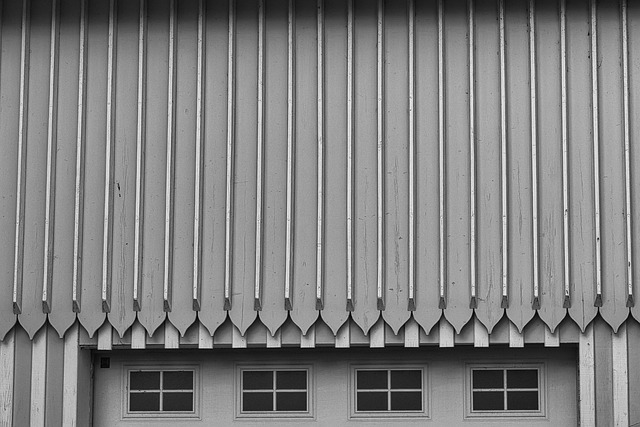In Colorado, fix and flip lenders play a pivotal role in transforming undervalued properties into profitable investments. These specialized financiers offer tailored capital with flexible terms for real estate rehab projects, considering location, market trends, and projected returns. Key steps involve identifying distressed homes, securing short-term loans based on after-repair value (ARV), managing renovations within approved budgets, and successfully reselling the property. Choosing a lender in Colorado requires evaluating specialization, track record, interest rates, terms, and fees to enhance flipping success. Strategic planning, avoiding common pitfalls like cost underestimation or rushed financing, and demonstrating experience are crucial for profitable flips in this competitive market. Success stories highlight how access to fix and flip lenders empowers entrepreneurs to turn challenging properties into lucrative opportunities.
“Unleash your real estate investment potential with property rehabilitation financing, especially through the lens of Colorado’s vibrant fix and flip lending scene. This comprehensive guide navigates the intricate world of specialized lenders who fuel the transformation of underperforming properties into lucrative flips. From understanding key concepts to avoiding common pitfalls, we explore the step-by-step process and benefits of this game-changing approach. Discover how to choose the right fix and flip lender in Colorado and read inspiring success stories that highlight the power of strategic rehabilitation financing.”
- Understanding Property Rehabilitation Financing: The Fix and Flip Lender's Role in Colorado
- How Does Fix and Flip Lending Work? A Step-by-Step Guide for Real Estate Investors
- Benefits of Using Specialized Lenders for Your Next Rehabilitation Project
- Key Factors to Consider When Choosing a Fix and Flip Lender in Colorado
- Common Mistakes to Avoid During the Rehabilitation Financing Process
- Success Stories: Real-Life Examples of Flippers Thriving with Fix and Flip Loans
Understanding Property Rehabilitation Financing: The Fix and Flip Lender's Role in Colorado

In the dynamic landscape of property rehabilitation financing, fix and flip lenders play a pivotal role in Colorado’s real estate market. These specialized lenders are instrumental in funding the transformation of distressed or undervalued properties into lucrative investment opportunities. The process involves identifying promising homes, assessing their potential after renovation, and securing the necessary capital to cover extensive repairs, renovations, and other associated costs.
Colorado’s thriving fix and flip lending scene is characterized by a range of options, from traditional banks to alternative financing sources. Lenders in this space not only provide funding but also offer expert guidance, ensuring investors make informed decisions. They carefully evaluate each property, considering factors like location, market trends, renovation scope, and potential return on investment. This meticulous approach distinguishes fix and flip lenders from conventional mortgage providers, making them a go-to choice for ambitious rehab projects in the vibrant Colorado real estate sector.
How Does Fix and Flip Lending Work? A Step-by-Step Guide for Real Estate Investors

Fix and flip lending in Colorado is a specialized financing option designed for real estate investors looking to renovate and resell properties quickly. The process, often referred to as “fix and flip,” involves securing funding to acquire undervalued or distressed homes, perform extensive repairs, and then sell them at a higher price. Here’s a step-by-step guide for investors navigating this financing option:
1. Identify the Property: Start by searching for properties that are in need of significant renovations but have potential. Look for distressed homes, foreclosures, or owner-financed deals. In Colorado, fix and flip lenders often focus on areas with high real estate demand and a steady market to ensure quick resales.
2. Secure Financing: Fix and flip lenders in Colorado provide short-term loans, typically ranging from 6 months to 2 years. These loans are based on the after-repair value (ARV) of the property. Investors should provide detailed renovation plans and estimates to demonstrate their ability to complete the project within the loan term. Lenders will assess the ARV, repair costs, and local market trends to determine the loan amount.
3. Perform Repairs: After securing funding, investors can begin renovations. This step involves hiring contractors, purchasing materials, and managing the renovation process. It’s crucial to stay within the approved budget and adhere to the project timeline. Fix and flip lenders in Colorado often require regular updates and progress reports during the renovation phase.
4. Market and Sell: Once the repairs are complete, investors list the property for sale. The goal is to secure a profit by selling it at a higher price than the purchase and renovation costs. In competitive markets like Colorado, quick flips can yield significant returns, but they require efficient project management and accurate financial planning.
Benefits of Using Specialized Lenders for Your Next Rehabilitation Project

When it comes to your next fix and flip project in Colorado, turning to specialized lenders can offer a multitude of advantages. These lenders are experts in property rehabilitation financing, understanding the unique needs of investors focused on revitalizing properties. They provide access to capital tailored for these specific projects, often with more flexible terms than traditional banks. This specialization means they can navigate the complexities of renovation loans and offer a smoother process, saving you time and effort during what can be a demanding project.
Specialized fix and flip lenders in Colorado also bring a wealth of industry knowledge. They stay updated on local markets, construction costs, and regulatory changes, which is vital for ensuring your project stays profitable. Their expertise can help you avoid costly mistakes and make informed decisions throughout the rehabilitation process. This level of support is particularly beneficial for first-time investors or those tackling complex renovation projects.
Key Factors to Consider When Choosing a Fix and Flip Lender in Colorado

When selecting a fix and flip lender in Colorado, several critical factors come into play. Firstly, consider the lender’s specialization; expertise in fix and flip loans is essential as they understand the unique aspects of real estate rehabilitation projects. Look for lenders who cater specifically to this niche, ensuring they have a proven track record of supporting similar transactions.
Secondly, interest rates and terms should be carefully evaluated. Fix and flip lenders often offer short-term financing with competitive rates, but terms can vary greatly. Compare loan structures, including interest rate types (fixed or adjustable), repayment periods, and any associated fees. Lenders with flexible terms and transparent pricing can make the rehabilitation process smoother for both novice and experienced investors in the Colorado market.
Common Mistakes to Avoid During the Rehabilitation Financing Process

Many aspiring “fix and flip” entrepreneurs in Colorado dream of turning rundown properties into lucrative investments, but the rehabilitation financing process can be tricky if not approached strategically. One common pitfall is underestimating the costs involved; renovation projects often exceed initial estimates due to unforeseen issues like structural damage or outdated systems requiring extensive repairs. Before securing fix and flip lenders Colorado has, it’s crucial to conduct thorough inspections and factor in a buffer for unexpected expenses.
Another mistake to avoid is rushing into financing without a solid plan. Lenders will scrutinize your proposal, so having a detailed strategy outlining the renovation scope, timeline, and expected return on investment is essential. Demonstrating experience in similar projects or partnering with established fix and flip lenders Colorado offers can significantly improve your chances of securing favorable terms and avoiding costly mistakes during the rehabilitation financing process.
Success Stories: Real-Life Examples of Flippers Thriving with Fix and Flip Loans

In the competitive world of real estate, “fix and flip” loans have emerged as a game-changer for ambitious flippers in Colorado. These specialized financing options allow investors to purchase distressed properties, renovate them, and then sell or refinance at a higher value. Success stories abound, with many flippers achieving significant returns on their investments within short periods. For instance, John, a seasoned fixer-upper from Denver, secured a fix and flip loan from a local lender to acquire a run-down house in need of extensive repairs. After allocating resources for renovations, he transformed the property into a modern, high-end residence, selling it at a 30% profit within six months.
Another inspiring example is Sarah, who ventured into the fix and flip market with a loan from a Colorado-based lender. She identified an overlooked property in Boulder, invested in its renovation, and staged it to appeal to modern buyers. Her strategic approach led to a quick sale, generating a substantial profit margin that far exceeded her initial investment. These real-life scenarios highlight how access to fix and flip lenders in Colorado has empowered entrepreneurs to turn challenging properties into lucrative opportunities, contributing to the vibrant local real estate landscape.
In conclusion, property rehabilitation financing through fix and flip lenders in Colorado offers a unique opportunity for real estate investors to turn distressed properties into profitable ventures. By understanding the intricacies of this lending process, leveraging the benefits of specialized lenders, and avoiding common pitfalls, flippers can unlock their full potential in the vibrant Colorado market. These success stories highlight the transformative power of fix and flip loans, making it a game-changer for those navigating the complex landscape of property rehabilitation.
